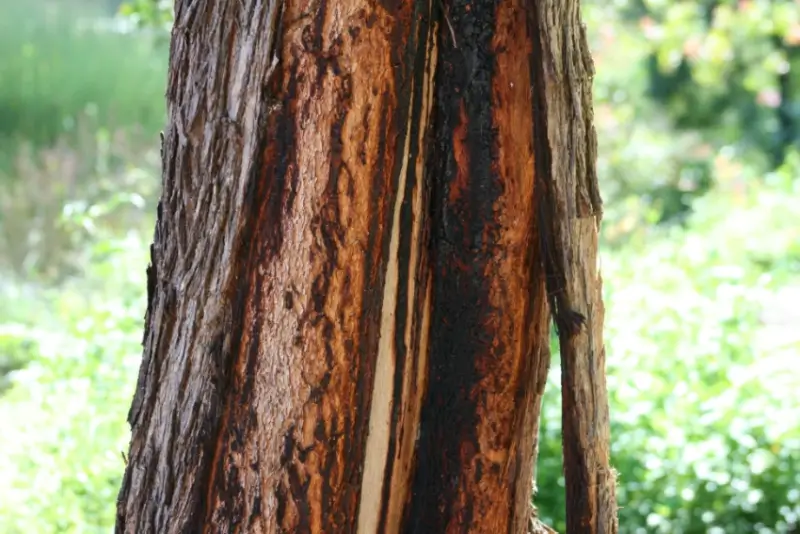
When bark peels off trees, it can signal underlying issues. The Grounds Guys explain key causes and solutions.
|
In the popular imagination, trees are often considered stoic, timeless, and unchanging, but that’s far from the truth. In reality, trees constantly grow, drop their leaves, shift into dormancy, and sometimes, even shed their bark. You might feel surprised or even alarmed if you notice bark coming off trees on your property, which raises the question: why do some trees shed their bark?
Is your tree sick or hurt? Is it dying? In fact, some tree species shed their bark as part of their natural growth process. In other situations, however, bark falling off a tree can signify an underlying issue.
What does it mean when bark falls off a tree? The answer, frustratingly, is that it depends.
Table of Contents:
Why Is Bark Falling Off My Tree?
The truth is that there’s no single answer to what causes bark to fall off trees. There are, instead, a variety of different possibilities. Homeowners and property managers with many trees on their land should know the most common causes of bark falling off a tree.
Natural Shedding
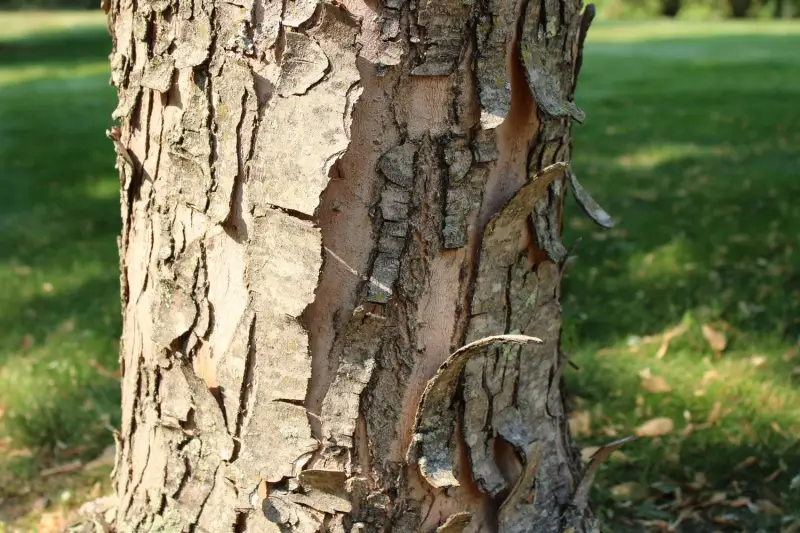
The good news is that bark coming off a tree might not signal a problem. Several popular types of trees naturally lose their bark. When these trees grow and expand, the outer layer of bark can no longer contain their increased circumference. As a result, the tree will shed its bark like a crab, outgrowing its shell to make room for new growth.
This process is usually gradual and occurs in small, thin strips or plates. As long as you can see healthy bark beneath the shedding bark, your tree is likely healthy and just doing its natural thing.
Common trees that normally shed their bark include:
Sunscald

Many trees go into dormancy during Canada’s long, cold winters. When the days begin to warm, cells in the tree’s bark activate and lose their cold hardiness. In some cases, however, a few warm days can turn into icy cold nights, causing the new tree cells to freeze and die. The tree’s bark will become sunken and discoloured and may begin to crack and fall over time, a process known as sunscald. Sunscald is more common in young trees with thin bark.
Frost Cracking
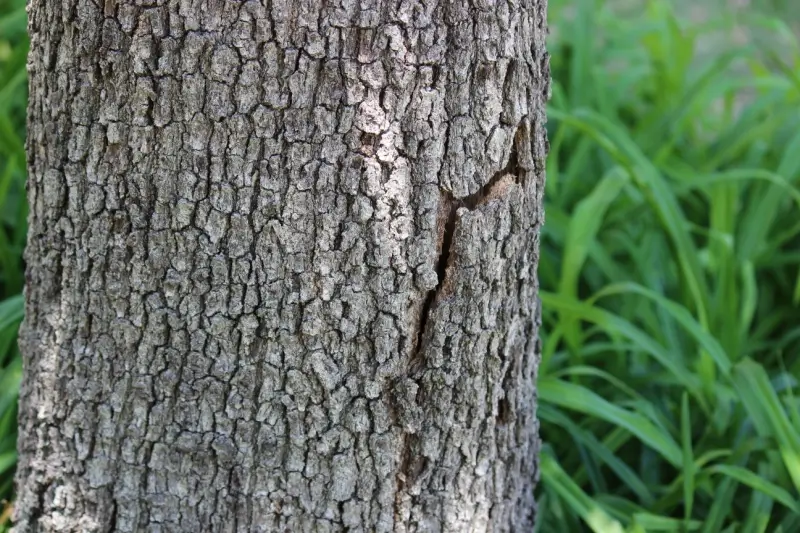
Extreme temperature swings in late winter can cause a phenomenon known as frost cracking. During the day, the sun can warm a tree’s bark, causing cells to expand. At night, when temperatures drop quickly, the outer bark will cool down faster than the inner bark, causing it to contract and crack. Frost cracking leads to vertical cracks that may eventually result in the bark falling off. Frost crack doesn’t just happen in winter, however. Excessive heat can also trigger the bark to crack.
Frost cracking is more common in fruit trees, some nut trees, sycamores, maples, and willows.
Pest Infestations
.webp)
Various insects, such as bark beetles, can tunnel beneath the bark of a tree and cause significant damage. As these pests create corridors under the bark (also known as galleries), they feed on the inner bark and disrupt the flow of water and nutrients in the tree. The weakened tree may begin to lose bark. Other burrowing insects include:
- Dogwood borer
- Asian longhorn beetle
- Emerald ash borer
Fungal Diseases
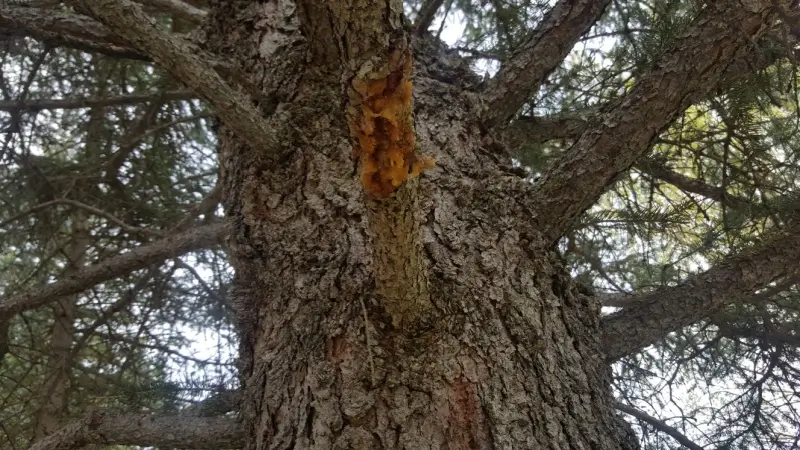
Cankers and other fungal diseases can cause localized areas of dead bark on a tree. Cankers result from fungi that enter the tree through wounds or natural openings. As the fungus grows, it kills the living tissue beneath the bark, causing the bark to become sunken, discoloured, and eventually fall off. Common fungal diseases are:
- Cytospora canker
- Hypoxylon canker
- Nectria canker
How to Address Bark Shedding
If you’ve noticed your tree shedding bark, it’s a good idea to take action and figure out if the shedding is natural or a cry for help. What you find will help you determine your next steps.
Identify the Tree Species
The first piece of the puzzle is to identify the trees on your property. Several types of trees shed their bark as part of their natural life cycle. If you have these trees on your property and the new bark beneath the peeling bark looks healthy, your tree is probably fine.
Assess the Pattern of Bark Loss
Consider the amount of bark coming off the tree and the pattern of loss. If the bark is falling off in small, thin pieces and the loss is uniform, your tree is likely undergoing a natural shed. If the bark is falling off in large chunks or the loss concentrates in specific areas, your tree might be struggling with health issues, which should be addressed immediately by a professional.
Look for Signs of Pests or Disease

Check your trees for signs of pest infestations, which can take the form of:
- Holes in the bark
- Sawdust-like frass
- Insects on the branches, trunks, or leaves
- Cankers
If you see any of these signs, consult an experienced landscaping company or certified arborist.
How to Prevent Bark from Falling Off Trees
Sunscald, frost cracking, pest infestations, and fungal diseases can all harm and even kill your trees. Pests and diseases, in particular, can quickly spread across your land, taking down many trees in one fell swoop. Fortunately, you can take measures to help prevent unnatural bark shedding.
Select the Right Trees
Make sure to choose new trees for your property that suit your local climate and soil conditions. An experienced landscape professional can provide some recommendations based on your region, soil composition, and personal preference.
Wrap Young Trees
-(1).webp)
Young trees have thin bark, which makes them more susceptible to sunscald and frost cracking. In the fall, wrap the trunks of young trees with tree wrap and use a tree guard to protect them from temperature fluctuations. Depending on the number of young trees on your property, you may want to enlist the help of a professional to ensure your young trees are properly protected from the elements.
Prune Regularly
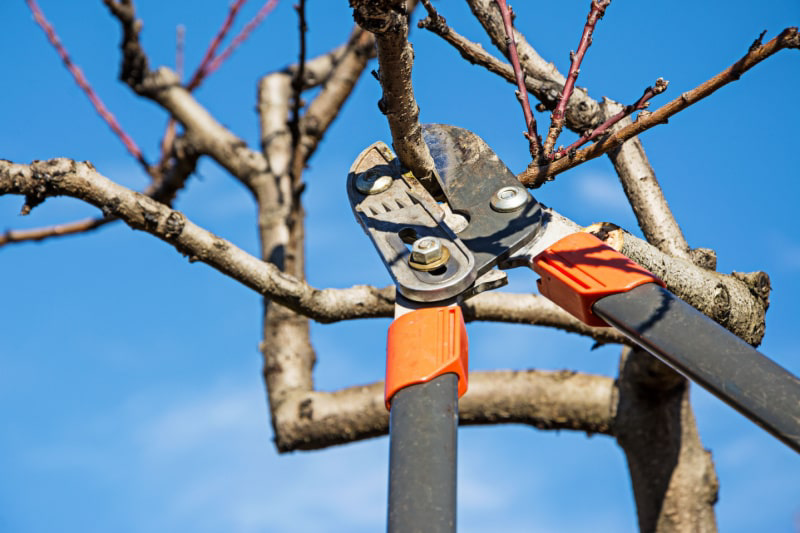
Pruning your tree to remove dead, damaged, or diseased branches should be part of your seasonal tree maintenance. Seasonal pruning helps stop the spread of pests and diseases and supports your tree’s overall health. If your trees have grown to the point where it’s no longer safe for you to prune them, contact a local landscape professional to get the job done.
Monitor for Pests and Diseases
While your trees do possess some natural built-in defenses, they are constantly exposed to the threat of a pest infestation. This is why it’s important to regularly check your trees for signs of pest infestations or fungal diseases. By detecting and treating these issues early, you can significantly limit the potential damage to your trees.
Provide Good Tree Care
Ensuring your trees are regularly pruned, have enough water and nutrients, and you’ve maintained good soil drainage will go a long way towards keeping them healthy and thriving. Good, proactive tree care will help them be more resilient to the many environmental stressors that can cause bark shedding.
What to Do When Your Trees Shed Bark
Now you know that trees shed their bark for a number of different reasons. In some instances, bark coming off a tree is completely natural. At other times, your tree may be suffering from severe weather, pests, or diseases. It can be hard to monitor all your trees and provide the full care they need.
Whether your trees are shedding bark or would just benefit from a little TLC (Tree Love and Care), The Grounds Guys® can help. Our experienced teams are located throughout Canada and provide residential and commercial tree work in addition to other lawn care and landscape services. We also perform pest control, pruning, and more to ensure your trees remain healthy and strong throughout the year.
To get started, request a free estimate today.